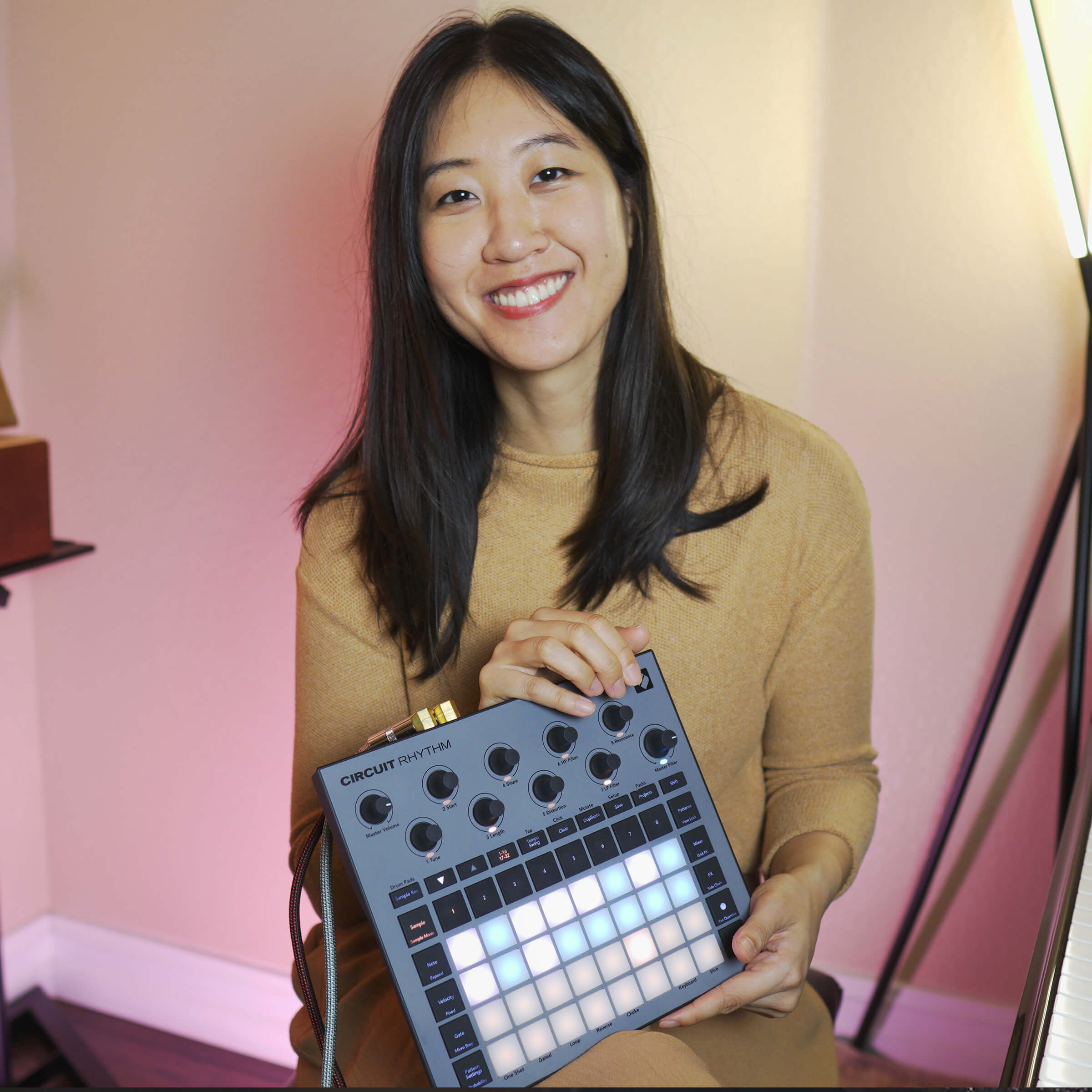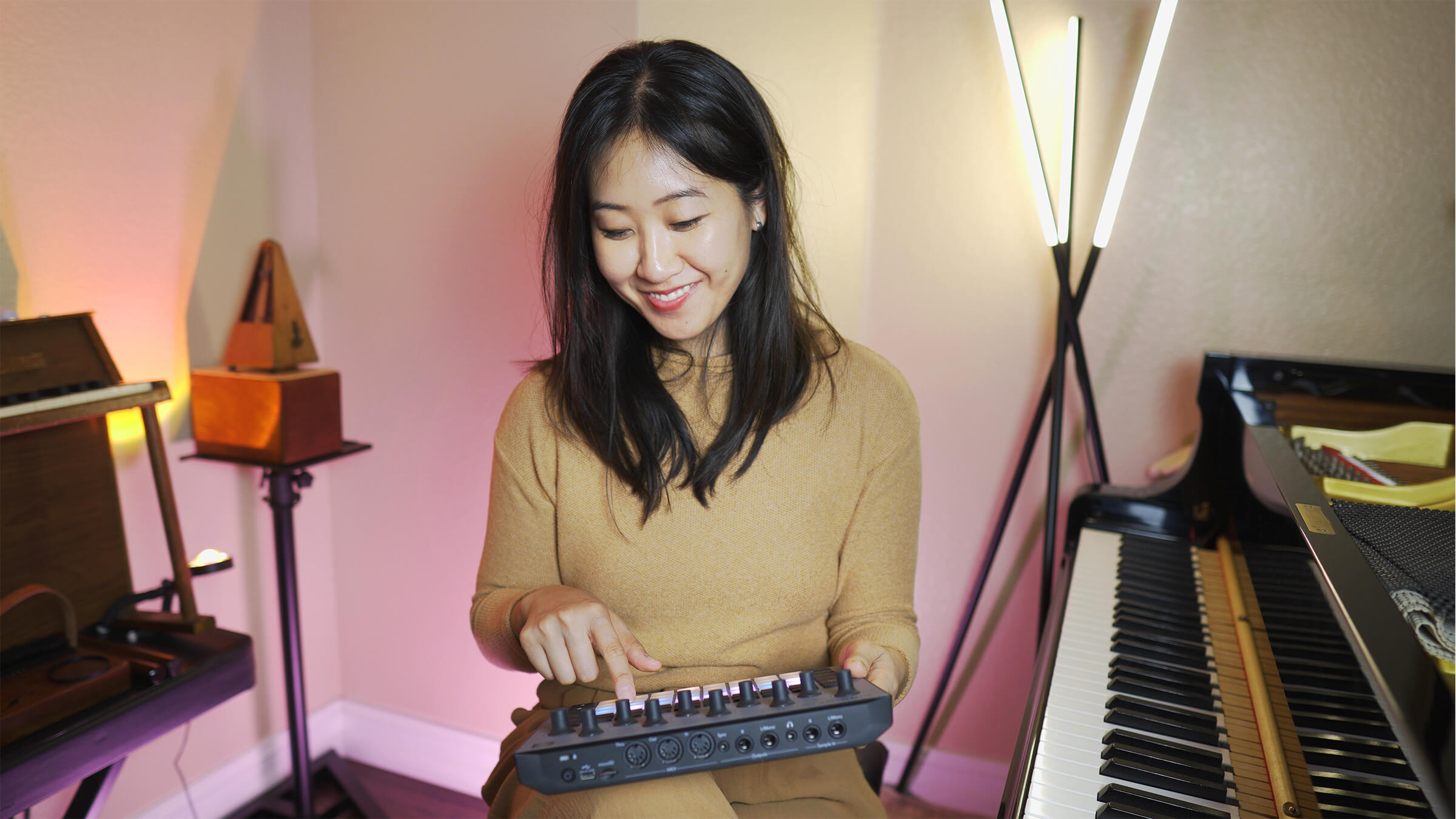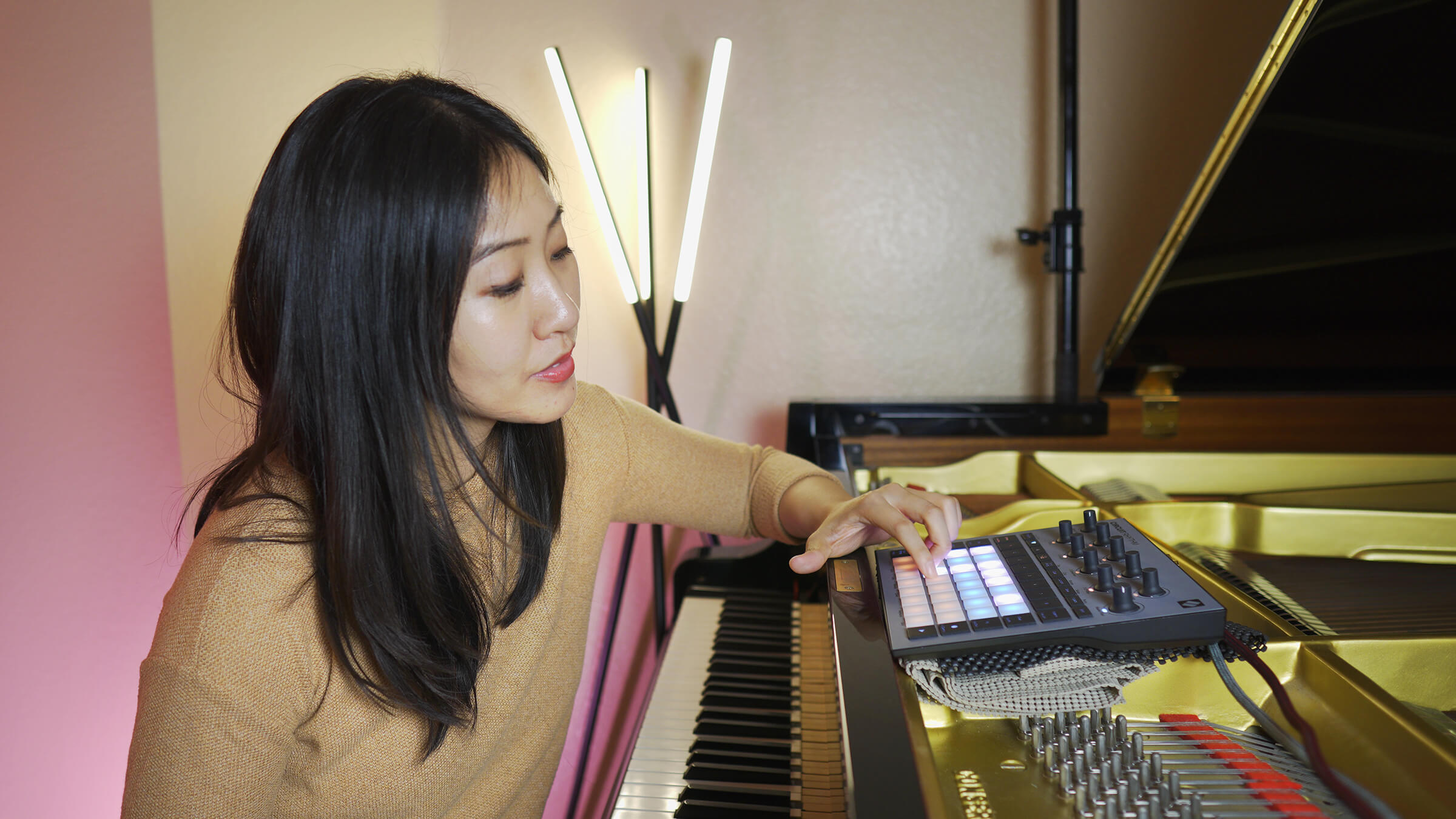Watch: Nahre Sol blends beatmaking with classical using Circuit Rhythm
Plus download a free pack of Nahre’s piano samples and found sounds.

Nahre Sol, at this point, can fairly be called a YouTube sensation. Since launching her channel in 2017, her signature blend of piano performances, music-theory explainers, challenges, vlogs and short documentaries have garnered nearly three-quarters of a million subscribers. She’s also an accomplished artist in her own right, having performed around the world, composed for film and video games, and released her own debut album, Alice in Wonderland in 2020.
Nahre likens this career balancing act to attempting to keep two instruments in tune with one another. “Both require practice and attention to detail,” she explains. “But together, they create a harmonious output that enriches both my creative output and my audience's experience.”
Despite a traditional musical education that includes degrees from Juilliard and The Royal Conservatory of Music in Toronto, Nahre is not known for staying in her comfort zone; she frequently turns her classically trained hand to unfamiliar genres, tools, and techniques in her videos. So when looking for ways to take our Circuit Rhythm drum machine out of its natural beat-making habitat, we could think of no-one better suited to the task.
We hooked Nahre up with a Circuit Rhythm of her own, and challenged her to spend a month getting to know it and seeing what kind of music would result from the process. Watch the video below to see what she makes of her new hardware, find out how she gets to grips with sampling for the first time, and learn how she puts her own distinctive spin on the art form.
Shortly after Nahre wrapped the video, we got back in touch to find out what she made of her experience. “Playing samples on the Circuit Rhythm in keyboard mode felt surprisingly natural,” she says. “It allowed me to apply my piano technique in a new context, using the samples as keys.”
"This setup made it easier to experiment with timing and rhythm, weaving classical melodies into modern beats, which created a unique blend of the traditional and contemporary.”
When working in a new style or adopting a new process, it’s often helpful – and always acceptable – to take a large degree of inspiration from those who’ve already mastered the craft. And that advice works for pros like Nahre too: her first instinct upon unboxing her Circuit Rhythm was to fill it with existing sounds that spoke to her – the hammer blow from Mahler’s Sixth Symphony, John Cage clattering around during a performance of his Water Walk, and textures from one of American composer David Lang’s works. She then laid down a simple beat from these sources, added a pitched-down snippet of Ravel’s “Jeux d’Eau” recorded on her piano, and improvised a layer of melodies derived from the piece’s intervals to finish off.
This, Nahre concludes, was a great way to learn Circuit Rhythm, and to become familiar with the art of sampling. As she mentions in the video, branching out like this also helped her to overcome a spell of writer’s block. “Exploring these genres was exhilarating,” she recalls. “Each style, like hip-hop, techno, and house, has its own set of rules and aesthetics, which challenged me to think differently about rhythm, structure, and texture. It was like learning a new language, one that expanded my musical vocabulary and offered new ways to express classical themes.”
But as successful as her early experiments were, Nahre felt that she had been “copying” a style that wasn’t truly her own. Immediately, she wanted to take things further. “Initially, my approach was highly experimental,” she says. “I recorded anything that caught my ear, without much thought to how it might be used. Over time, as I became more familiar with the capabilities of the Circuit Rhythm, my sample collection became more curated, focusing on sounds that could blend well with classical motifs or bring a fresh twist to them.”

"As I delved deeper, I began to think more critically about the quality of the recordings, the textures of the sounds, and how they could interact within a composition,” she continues. “I started selecting samples based on their potential to contribute to the overall harmony, their textural contrasts, and how they could fill the sonic space within an arrangement, always considering the balance and clarity of the final piece.”
Nahre describes her subsequent process of collecting new samples as a “treasure hunt,” on which she used her ears to find sonic gold wherever she went. This proved especially valuable when traveling with Circuit Rhythm and her trusty portable recorder – battery power comes in handy on long train rides! Her aim during this time was to capture sounds that reflected the essence of each place she visited – whether that was “the rhythmic tapping of a raindrop or the melodic call of a street vendor,” or, as we see in the video, everyday objects from a hotel room.
"I think it's really important to create your own samples,” Nahre explains, “because it gives your music a personal touch that you just can't get from downloaded sounds.”
Re-focussing on creating and then curating her own sample sets eventually led Nahre on a different path than the one she had originally set out on. She began to explore the Circuit Rhythm’s potential to augment her existing process, rather than seeing it as a tool that dictates a workflow of its own. In this new context, the device’s finite number of sample slots proved to be a useful creative limitation. “I had to think more strategically about each sound's role and how best to use the available space,” she tells us. “Overcoming this involved a lot of trial and error, eventually leading to a more thoughtful and impactful use of the device.”
That use, as it turns out, was as a live-performance instrument, rather than as a DAWless production station. Sat atop Nahre’s Yamaha C7, Circuit Rhythm became a way to trigger samples – some recorded from that same piano – as she played. This setup, which you can see in action towards the end of the video, marries a beatmaking–inspired sampling workflow with Nahre’s classical chops to enable a performance style that’s uniquely hers.

"Playing the grand piano and the Circuit Rhythm together was really cool,” Nahre says. “At first, it felt like I was trying to balance two completely different instruments, but as I practiced, they started to blend together nicely. It was a great learning experience that showed me how these two different sounds can complement each other well in a performance.”
Understanding the potential of this particular approach, as she explains in the video, was the biggest breakthrough of Nahre’s Circuit Rhythm experiment. “It feels like blending two very different worlds in a way that brings out the best in both,” she says. “It's fun to see how classical music can adapt to modern beats, and how much energy and new rhythms can be introduced into traditional compositions. It's like creating something completely new and unexpected.”
Will she continue with some of the techniques she’s learned from this project? “Yes,” is the emphatic answer. “I definitely plan to keep using new instruments and exploring different music styles. It keeps my creative process fresh and exciting. Even if no one else hears some of these experiments, they help me grow as a musician and keep my ideas flowing.”
"I'm excited to use what I've learned in my future projects and to keep experimenting with new sounds and techniques.”
Want to experiment with some of Nahre’s sounds from the video? Grab a free selection of melodies, prepared piano sounds, and field recordings by entering your email address below. And be sure to subscribe to Nahre’s YouTube channel to follow her future adventures in sampling.
Download your free sample pack:
